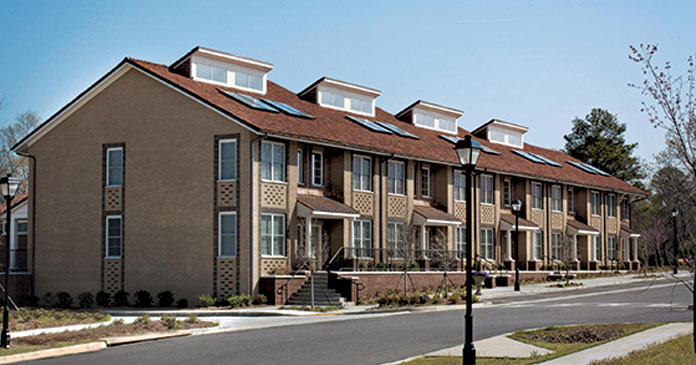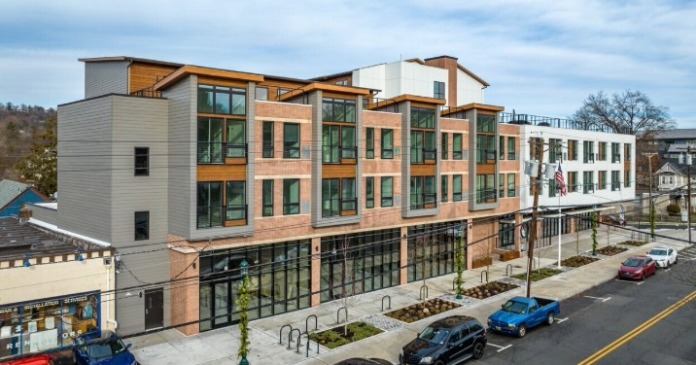
Located in the city of Rome, this new, energy-efficient, 10-unit public housing project is expected to earn LEED for Homes certification at the Silver level—a first for a project of this type in Georgia—as well as Energy Star and Enterprise Green Community Certification.
Funded through an American Recovery and Reinvestment Act competitive grant of $1,732,504 from the U.S. Department of Housing and Urban Development (HUD), and NWGHA, which threw in $350,000.
“Sustainable design is achievable without adding significant cost and complexity to a project,” said Jay Silverman, project manager for Lord, Aeck & Sargent. He notes that, for his firm, it was about incorporating sustainability to improve the quality and livability of the apartments, and to lower operating costs for the residents and client while staying within the project’s budget.
Green features of the project include passive solar orientation, daylighting harvesting strategies such as skylights, sun shades (to reduce solar gain), and natural ventilation (including operable windows and screens). Spray foam insulation was used in the walls and roof to maximize the building’s energy performance, and solar thermal heaters in each unit provide hot water to residents courtesy of the sun, reducing their monthly utility bills.
All units feature double hung, low-E insulated windows; Energy Star-qualified lighting, ceiling fans and appliances; low-flow water fixtures and WaterSense toilets; and low VOC finishes.
Author: Susan DeFreitas has covered all manner of green technology for EarthTechling since 2009. She is a graduate of Prescott College for the Liberal Arts and the Environment, and has a background in marketing green businesses.













